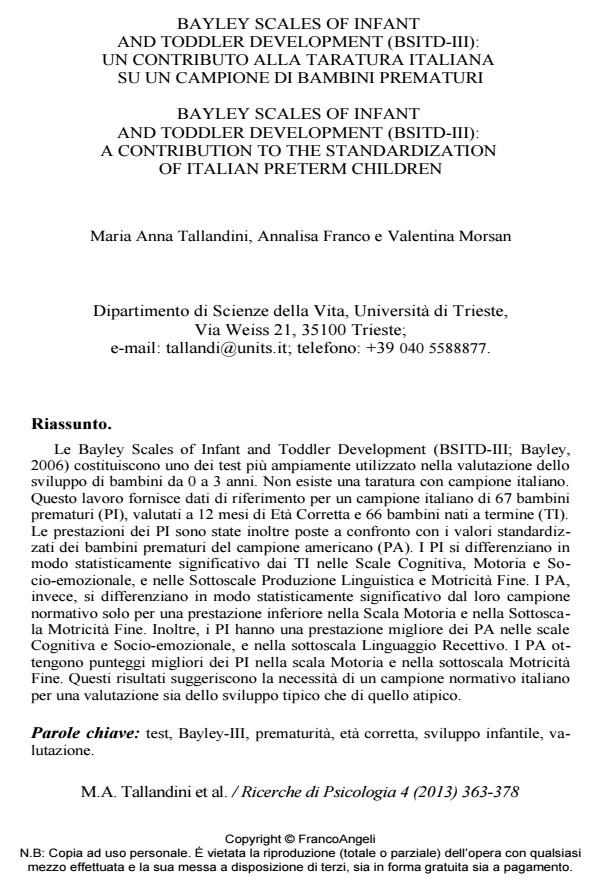Bayley scales of infant and toddler development (BSITD-III): a contribution to the standardization of italian preterm children
Journal title RICERCHE DI PSICOLOGIA
Author/s Maria Anna Tallandini, Annalisa Franco, Valentina Morsan
Publishing Year 2014 Issue 2013/4
Language Italian Pages 16 P. 363-378 File size 661 KB
DOI 10.3280/RIP2013-004002
DOI is like a bar code for intellectual property: to have more infomation
click here
Below, you can see the article first page
If you want to buy this article in PDF format, you can do it, following the instructions to buy download credits

FrancoAngeli is member of Publishers International Linking Association, Inc (PILA), a not-for-profit association which run the CrossRef service enabling links to and from online scholarly content.
The Bayley Scales of Infant and Toddler Development (BSITD-III; Bayley, 2006) are widely used to evaluate children development from 0 to 3 years old. At the moment no data from an Italian sample are available. This paper presents data from an Italian sample of 67 preterm children (PI) assessed at 12 months Corrected Age, compared with 66 same age full term Italian children (TI). The Italian preterm sample has also been compared with the standardized American sample of preterm children. The results indicate that PI performances are significantly lower than full term Italian infants in the Cognitive and Motor Scales and in the Subscales Fine Motor and Linguistic Production. Moreover, PI performances are better than the PA in the Cognitive and Socio-emotional Scales, and in the Receptive Language sub-scale. Conversely, PA are better than PI in the Motor Scale and in the Fine Motor Subscale. The differences observed in these results underline the necessity of a normative Italian sample for BSITD-III appropriate utilization.
Keywords: Test, Bayley-III, preterm, infants, children development, assessment
Maria Anna Tallandini, Annalisa Franco, Valentina Morsan, Bayley scales of infant and toddler development (bsitd-iii): un contributo alla taratura italiana su un campione di bambini prematuri in "RICERCHE DI PSICOLOGIA " 4/2013, pp 363-378, DOI: 10.3280/RIP2013-004002